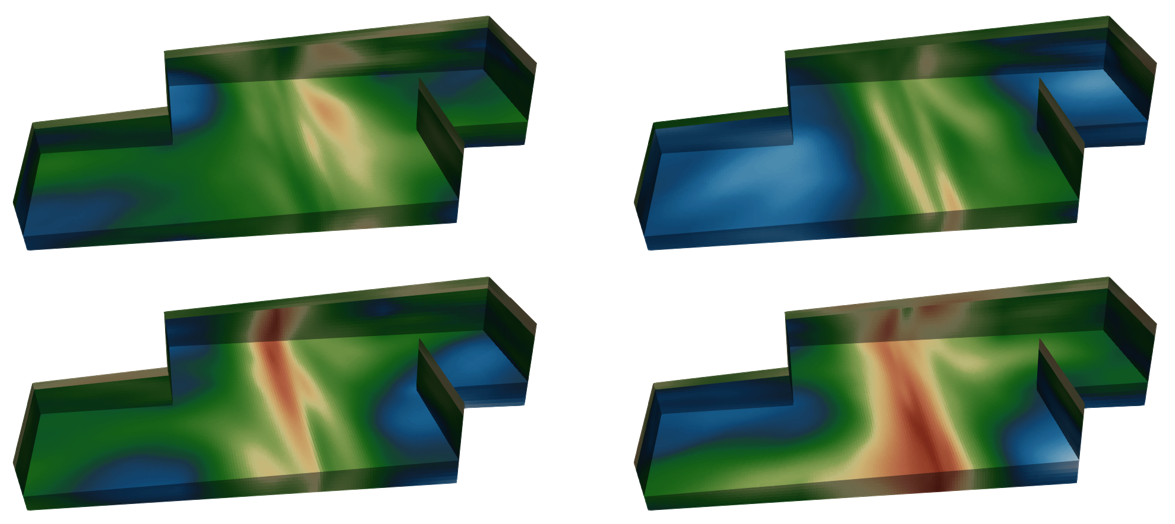Each roadmap addresses a particular aspect of decision-support modelling or a particular facet of PEST usage. Each is comprised of a document and an accompanying Microsoft Powerpoint slideshow. Each is short, and will take you no more than 20 minutes to read.
The roadmaps answer questions such as:
- Which of the many programs supplied with PEST do I use to undertake a particular task?
- What is a typical workflow for model calibration, or linear/nonlinear uncertainty analysis?
- What other options are available for undertaking these and other analyses?
Thanks to GMDSI for sponsoring this roadmap series.
Download all roadmaps. Then read each pdf document while viewing the partnered slideshow. Make sure to “play” the slideshow; the contents of many slides are meant to appear in stages.

Individual roadmaps are summarized below.
Introduction
This roadmap discusses how modelling can help decision-making. It points out that unless modelling is designed to answer a specific question, it may not be able to answer any question at all. That is, modelling must be task-oriented. Some of the tasks that it can accomplish are discussed in individual roadmaps.
A Simple Recharge Model
The LUMPREM recharge model is introduced. Utility programs which transfer its outputs to MODFLOW input files are also discussed.
Structured-Grid MODFLOW Models
This roadmap has nothing to do with calibration or uncertainty analysis. It discusses PEST-suite programs which interact with structured-grid MODFLOW models. Many of these programs facilitate important tasks such as plotting of model results, importing model properties into a GIS, and 3D display of model properties and/or results.
Unstructured-Grid MODFLOW Models
This roadmap discusses PEST-suite programs that work with MODFLOW-USG and MODFLOW 6. Many of these programs support important tasks such as plotting of model results, importing model properties into a GIS, and 3D display of model properties and/or results.
Dancing with Models
The importance of model-partner software such as PEST and PEST++ in decision-support modelling is discussed. So too is the non-intrusive interface that allows these programs to communicate with simulators and their pre/postprocessors. Model run parallelization is discussed. So too are programs from the PEST suite which automate PEST-to-model linkage.
The Model Jacket
A model is more than just a simulator. When undergoing calibration, and when being used to explore the uncertainties of decision-critical predictions, a model must be endowed with many parameters. This requires use of preprocessors. At its back end, postprocessors are required to undertake spatial and temporal interpolation to the sites and times of field measurements. Simulator pre- and postprocessors from the PEST suite are discussed. Programs which automate PEST setup in complex history-matching contexts are also discussed.
A Pilot Points Workflow
The use of pilot points in parameterization of structured-grid and unstructured-grid groundwater models is discussed. This roadmap also addresses issues such as how many pilot points to use, where to place them, and how to build covariance matrices that assist in regularization and uncertainty analysis.
Monte-Carlo Analysis
This roadmap shows you how to generate a multiplicity of random parameter sets, and how to then commission a multiplicity of model runs that use these parameter sets. Analysis of the outcomes of these model runs is also discussed.
Jacobian and Other Matrices
Included with PEST are a suite of programs that were written specifically to assist in understanding and processing the contents of Jacobian and other matrices. These programs can be useful in linear analysis. They also allow you to re-use all or part of an existing Jacobian matrix rather than having to build a new one if you alter a PEST input dataset.
Model Calibration
Model calibration pursues a minimum error variance solution to an ill-posed inverse problem. This roadmap shows what this means. The role of regularization in achieving this outcome is addressed. The discussion then focusses on strategies that optimize PEST’s performance when calibrating a typical groundwater model.
Why PEST Won't Work
Sometimes, after you have gone to a whole lot of trouble to link PEST to a model, the objective function refuses to fall. This roadmap explores the reasons for this. Sometimes it is a problem with PEST setup. Sometimes the problem originates with the model itself. PEST utility programs can help you distinguish between these possibilities.
Linear Analysis
The PEST suite includes a collection of utility programs which allow you to explore pre- and post-calibration parameter and predictive uncertainty under the assumption that the action of a model on its parameters can be represented by the action of a matrix (i.e. the Jacobian matrix) on a vector. Other analyses enabled by these programs include exploration of the worth of existing or contemplated data, and examination of contributions to predictive uncertainty made by different parameters and/or processes simulated by a model.
Nonlinear Posterior Uncertainty Analysis
Use of the PESTPP-IES ensemble smoother is discussed. So too are older methodologies such as null space Monte-Carlo. The roadmap also demonstrates some alternative means to explore post-calibration predictive uncertainty. These include direct predictive hypothesis testing and data space inversion. All of these can be undertaken using programs supplied with PEST.
Data Space Inversion
Data space inversion (DSI) is a unique ensemble-based method that enables quantification and reduction of predictive uncertainty with a very low model run burden. It can accommodate arbitrarily high levels of model structural and parameterization complexity. This is because it bypasses parameter adjustment. Instead, it builds and history-matches a surrogate statistical model that links the measured past to the managed future. Predictions are relatively immune from history-match-induced bias; predictive uncertainty intervals have high integrity.
Ensemble Space Inversion
Ensemble space inversion (ENSI) is another ensemble method. Good fits with a calibration dataset can often be attained with only a small number of model runs. Ensembles are used to define a subspace of parameter space within which a minimum error variance parameter field is sought. However ENSI allows greater flexibility in definition and deployment of parameter realizations than other ensemble methods. Ensembles can be different for different groups of parameters. Individual parameters can be estimated at the same time as ensembles are manipulated. Use of PEST_HP's Broyden Jacobian update functionality provides good performance in difficult calibration circumstances such as hierarchical inversion.
Conceptual Points and Pilot Points
Using conceptual points, a modeler can build a "hydrogeological mudmap" of a study area. Geostatistical hyperparameters are assigned to each of them. These govern the patterns of emergent hydraulic property heterogeneity during stochastic field generation. These patterns can be nonstationary. Hence directions and magnitudes of hydraulic property connectedness can vary from place to place (for example to represent the possibility of old alluvial channels).
Through complementary use of pilot points, locations and magnitudes of hydraulic property heterogeneity can be adjusted during history-matching. However, this mode of pilot point usage is a little different from traditional pilot point usage. Standard normal variates are assigned to pilot points. Non-stationary patterns of hydraulic property variability emerge through spatial averaging; these can be assigned to structured of unstructured grids. Values assigned to conceptual points and values assigned to pilot points can be subjected to simultaneous history-match adjustment. Hence locations and patterns of hydraulic property heterogeneity can be simultaneously informed by a history-match dataset. What could be more flexible than that?

